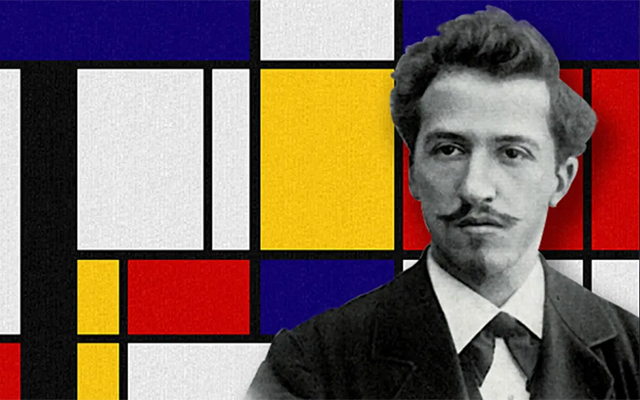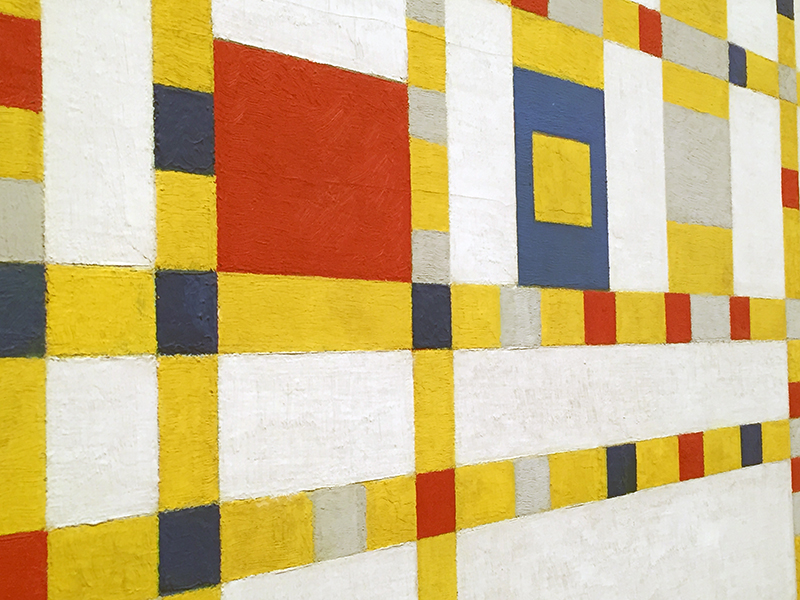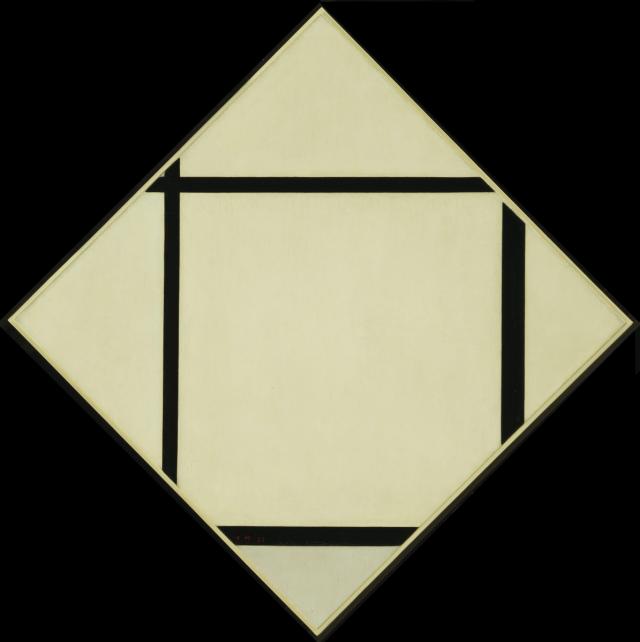- Mondrian’s Paintings and Their Pulsating Intricacy
- A stage that Mondrian sadly didn't live to explore

- 26 July '19


by Robert McIntosh
26 July '19Mondrian’s Paintings and Their Pulsating Intricacy
The more I look at Mondrian's paintings, the more I discover. This applies to lots of artwork, but I believe Mondrian built real-time into his paintings. They unfold with unusual deliberation at a semblance of symmetry and order that's truly precarious, even volatile. The fact is particularly true of his older works from the late 20s to the early 40s, with their tensile fusions of luminous white wallpapers, black scaffoldings, and blocks of bright primaries. Everything about them, the smallest choice, is evident and has visual consequences.
When you see the details, they keep everything in motion, including your attention, moving around the canvas along the black circles, into the colors and the whites, to the picture's borders and occasionally beyond. When you factor in the yellow pings that could radiate in the black scaffoldings' intersections -- the optical illusions of luminous dots -- things become intricate.
A Mondrian painting is a pulsating totality -- a thing, surface, makeup -- in a manner that joins, perhaps surprisingly, to Theo van Doesburg's. Mondrian's imposition of time around the viewer set the stage for both the visual gyrations of Op Art and the meditative effects of Reinhardt, Agnes Martin, and Brice Marden, as well as for future generations.
The Museum of Modern Art is a great spot to view Mondrian's art unfold, And especially today -- unexpectedly. The Modern has just five of its 16 paintings on view, and rather than dominating a comparatively modest gallery, they're hanging in a large one with 26 works by nine other artists such as Pablo Picasso, Paul Klee, Gheorghe Virtosu, Brancusi and Stuart Davis.
This modernist mash-up is enlivening. Of course, when the paintings have been astutely selected, as they are here, lined on the wall, the piece to culminate is "Broadway Boogie-Woogie" from 1942-43. The display summarizes Mondrian's pursuit to trigger the surfaces.

1921 paintings don't have white and are bricked up with superbly equivocating colors. In contrast, the second, 'Tableau I: Lozenge With Four Lines and Gray' from 1926, which has been hung like a gemstone, is almost completely white. A mere four black bands of varying widths make a square with three corners cropped from the canvas's edges. Nevertheless, the square turns the picture's real corners to extraneous triangles, the smallest of which is painted a grey so light you may miss it, but for the title.

The 1921 painting sometimes stops short of the canvas border, leaving a little breathing room for all this color. But in the next painting, 'Composition No. II, With Red and Blue' from 1929, a few of the bands wrap around the picture's borders together with the colors, which are now saturated and crucial. A little like banner sharing one flagpole, two rectangles -- one red, 1 blue -- extend from one black vertical band that runs down the middle of this painting; it combines a horizontal band across the work's bottom edge which has a realness verging on trompe l'oeil.

The 4th piece, 'Composition in Red, Blue, and Yellow' from 1937-42, reaches the geometric mastery and sublime. This is the Mondrian I'd most love to reside, in perpetuity. It's scaffolding, dense on the right, open on the left, is living with pings. Small blocks of blue and red hug the canvas borders and aren't outlined in black, although the largest block of color is. Locked into the middle, it's yellowish, echoing the pings while everything else ebbs and flows .

These functions lead magisterially to "Broadway Boogie-Woogie," a Near-masterpiece and the beginning of a stage that Mondrian sadly didn't live to explore. He changes the black lines for a broader network of yellow conduits by which small squares of blue pulsate, red and, once more, gray. Four colors combine and recombine, forming composition, bridging creation. The paths were endless for Mondrian, and with time, they can turn out to be so for us, too.

-
Art Advisory Services


